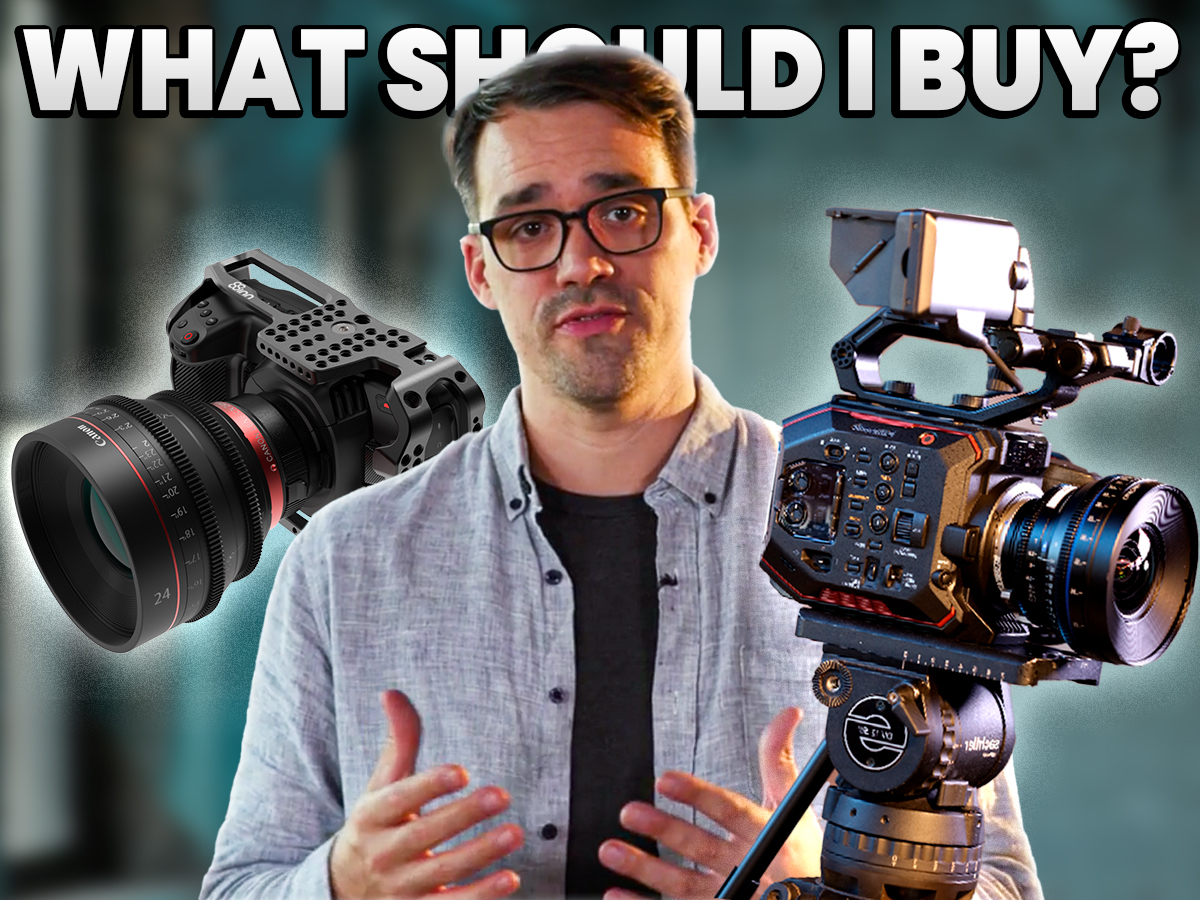One of the most common questions I’m asked is, “What camera should I buy, or what’s the best camera out there right now?” My candid response may (or may not) surprise you – don’t buy one; rent instead! Purchasing a camera is akin to buying a car – it’s an asset that depreciates quickly. Like a computer, it can become nearly obsolete in just a few years. Your hard-earned money is better spent on items that will last a lifetime and serve you regularly, such as stands, lenses, or even a studio space. Investing in your long-term business and life goals offers a more substantial return on investment. Moreover, channeling your funds into a robust sales team or a targeted marketing campaign can help you attract ideal clients. You can then let your clients cover the costs of renting the perfect camera for your project. Admittedly, I have a vested interest as the owner of a rental house. So, as promised, here are the ten crucial factors to consider when buying a camera.

1. Budget:
The first thing you need to consider is your budget. Cameras can range from a few hundred dollars to tens of thousands of dollars, and the important thing to understand when making this selection is that any one camera can be made to look like any other camera with enough preparation, skill, effective lighting, and by manipulating the footage in post production. When investing in a given brand you are investing in that brand’s research, development, and the algorithm that that particular company utilizes to process sensor information. So, choose wisely and do your research, and ask yourself: what look are you trying to achieve?
2. Resolution:
Resolution plays a pivotal role in your camera selection. It directly affects your footage’s quality, but it’s vital to choose the right resolution for your project’s final output. Not all projects require 8K or 4K resolution. Web or social media content may suffice with 1080p or even 720p. High resolution also demands more storage space and can affect post-production workflows. Understand your post-production workflow and storage needs before investing in an ultra high-resolution camera.
3. Frame Rate:
Your shooting needs are the determining factor when selecting a frame rate. If you want to add a little emphasis to your shot, 60 fps can do the trick. If you want to really extend a moment or build the drama, 120fps may be the sweet spot. And if you want to capture really slow-motion shots, 240 fps and above is where you should be looking. High frame rates also require more powerful lights, to achieve the same look of a shot that is 24 fps while shooting 240fps, you will need 10 times as much light which can add cost to your lighting budget. It’s also important to note that higher frame rates also come with higher storage and processing requirements, which can affect your post-production workflow. When selecting a camera based on frame rate, it’s important to consider the project’s final output and the associated workflow and storage requirements.
If you are interested in learning more about how renting can help your Business Grow, schedule a call here or visit MagRents.com.
4. Bit Depth:
An often overlooked but extremely important consideration. Bit depth is an important consideration as it determines the amount of color information the camera can capture and store. Bit depth refers to the number of bits used to represent each color channel in an image, with higher bit depths providing a greater range of colors and more detailed tonal information. A camera with a higher bit depth can capture exponentially more color information in each pixel, which can be particularly important for high-end professional photography and cinematography.
5. Low-Light Performance:
Low-light performance is essential for filming in darker environments, or in available light scenarios. It varies from camera to camera. If you want to shoot events or prefer to shoot with natural lighting then you want the camera with the best low light performance. Most cameras these days have good low-light performance, but if extreme low-light performance is important to you and the type of projects you are shooting it should be a key consideration.
6. Dynamic Range:
Dynamic range refers to the camera’s ability to capture tones ranging from the darkest shadows to the brightest highlights. It’s measured in stops, and a wider dynamic range captures more detail in both shadows and highlights. This is essential for high-contrast lighting situations, such as bright sunlight under a bridge. Consider the dynamic range based on your project’s needs. There are many factors that play a part in determining how many stops a camera can capture but cameras with a wider dynamic range can capture more subtle variations in tones and color, resulting in a more dreamy and nuanced look.
7. Weight and Size:
The camera’s size and weight impact ease of use, mobility, and support item costs like tripods and stabilizers. Larger cinema cameras, when fully equipped, offer exceptional image quality but come at a higher cost. Compact cameras are lighter and more cost-effective. Choose the size that aligns with your budget and shooting style.
8. Lens Mount:
The lens mount of a camera is the physical interface between the camera body and the lens. Professional lens mounts are designed to securely attach the lens to the camera body and many provide communication between the lens and the camera’s electronics. When selecting a camera there are several factors to consider such as compatibility with existing lenses. If you have already invested in lenses, it’s important to ensure that the camera you purchase is compatible with those lenses. Interchangeable mounts: Many professional cameras have interchangeable mounts that can be removed and replaced with a different mount type. Lens availability, consider the availability of lenses for the camera’s mount type. Some lens mounts have a wider selection of lenses available, while others may have fewer options.
9. Future-Proofing:
Future-proofing your camera involves selecting one that remains relevant as technology evolves. Consider manufacturers with strong track records for reliability and support. Look for cameras with features relevant to your work and that remain relevant over time, such as higher resolution and advanced autofocus technology. Research resale values and choose a camera that holds its value well.

10. Battery Life:
Battery life is an important consideration when selecting a camera, some cameras are known for being power-hungry and consuming a lot of battery life, while others have better battery efficiency. Cameras such as Red, Blackmagic, and Arri are known for their high power consumption and may require larger, high-capacity batteries to keep up with their power demand. These batteries can be more expensive and may need to be replaced more frequently. On the other hand, cameras from Canon and Sony tend to have better battery life and may require fewer batteries to get through a full day of shooting. If you are shooting documentary-style or in remote locations where power sources are limited, having a camera with good battery life is essential. It can save you from carrying a lot of extra batteries and ensure that you can keep shooting without interruption.
Conclusion:
Purchasing a new digital cinema camera is a significant investment that requires careful consideration. When evaluating your options, keep in mind your budget, resolution, frame rate, low-light performance, dynamic range, weight and size, interchangeable lens, compatibility with accessories, battery life, and brand. However, for most filmmakers and production companies, renting a camera is a more cost-effective option that provides greater flexibility and allows you to stay current with technology advancements in the industry without the costly maintenance or the liability associated with owning. Finally, renting allows you to stay up to date with the latest camera technology and industry standards without having to invest in a new camera each time and renting is always a great way to take a piece of equipment for a test drive before purchasing.
It’s important to remember that the quality of the camera is not the sole determinant of the quality of your production. While a high-end camera can certainly provide better image quality, it is ultimately the skills of the operator that make the difference. A skilled cinematographer can create stunning footage with a basic camera, while a novice with the best equipment may still produce mediocre results. Therefore, it’s important to prioritize developing your skills, technique, and planning, rather than simply relying on the latest and most expensive camera. Remember, a camera is just a tool, and it’s how you use that tool that makes all the difference.
I hope your next production is your best one yet.


0 Comments